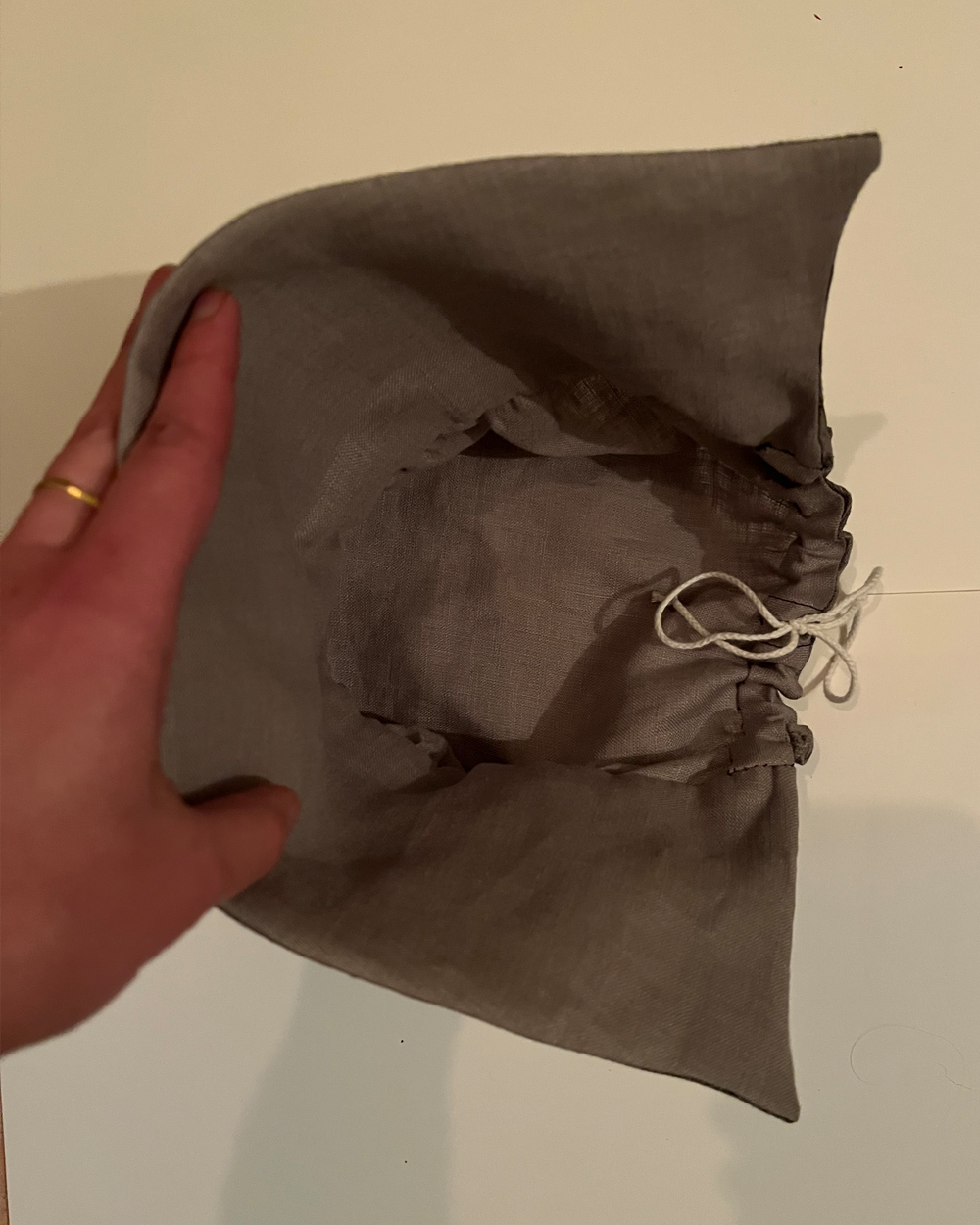HATalk Competition Entry 2024
Kelly Morgan
Description
The inspiration behind this bonnet came from reading The Wager, by David Grann (2023). I felt deep sympathy for the women and wives impacted by this event and many other naval explorations. I knew I wanted to make a linen bonnet in an attempt to give identity to these lives we know so little about. The decision to hand-press a print onto the linen references that many of the men were forced onto this voyage through Press Gangs and violence. The use of black ink connects to the name given to many seafaring men, ‘Tar.’ A passing ship with sun and moon on either side of the bonnet’s brim indicates the passing of time, and no home in sight. The ship remains a silhouette to depict hope and faith, but no factual knowledge. And the infinity of waves that circle the bonnet’s crown represent the constant never knowing, worrying, and rocky lives these women must have faced, day in, and day out.
Techniques:
- I outlined the pattern pieces of the bonnet onto lino plates.
- Drew ship/water/sun/moon illustrations within the pattern pieces.
- Once drawn, I carved out the negative space of the lino plates.
- After the carving was completed, I inked the lino plates and hand-pressed the print onto the linen.
- When the ink was set I cut out the pattern pieces and constructed the linen bonnet.
- The bonnet consisted of two pattern pieces for the brim and one for the crown.
- The excess fabric on the crown is gathered and ruched.
- There is a functioning drawstring tie at center-back.
Materials:
Light grey linen
Black thread
Cording
Lino plate
Lino carving tools
Inking brayer
Speedball black fabric screen printing ink
Materials:
Light grey linen
Black thread
Cording
Lino plate
Lino carving tools
Inking brayer
Speedball black fabric screen printing ink
Note: Entries have been not been edited or proofread to protect the integrity of the maker's original meaning.
HATalk Competition Entry 2024
Kelly Morgan
Description
The inspiration behind this bonnet came from reading The Wager, by David Grann (2023). I felt deep sympathy for the women and wives impacted by this event and many other naval explorations. I knew I wanted to make a linen bonnet in an attempt to give identity to these lives we know so little about. The decision to hand-press a print onto the linen references that many of the men were forced onto this voyage through Press Gangs and violence. The use of black ink connects to the name given to many seafaring men, ‘Tar.’ A passing ship with sun and moon on either side of the bonnet’s brim indicates the passing of time, and no home in sight. The ship remains a silhouette to depict hope and faith, but no factual knowledge. And the infinity of waves that circle the bonnet’s crown represent the constant never knowing, worrying, and rocky lives these women must have faced, day in, and day out.
Techniques:
- I outlined the pattern pieces of the bonnet onto lino plates.
- Drew ship/water/sun/moon illustrations within the pattern pieces.
- Once drawn, I carved out the negative space of the lino plates.
- After the carving was completed, I inked the lino plates and hand-pressed the print onto the linen.
- When the ink was set I cut out the pattern pieces and constructed the linen bonnet.
- The bonnet consisted of two pattern pieces for the brim and one for the crown.
- The excess fabric on the crown is gathered and ruched.
- There is a functioning drawstring tie at center-back.
Materials:
Light grey linen
Black thread
Cording
Lino plate
Lino carving tools
Inking brayer
Speedball black fabric screen printing ink
Materials:
Light grey linen
Black thread
Cording
Lino plate
Lino carving tools
Inking brayer
Speedball black fabric screen printing ink
Note: Entries have been not been edited or proofread to protect the integrity of the maker's original meaning.












